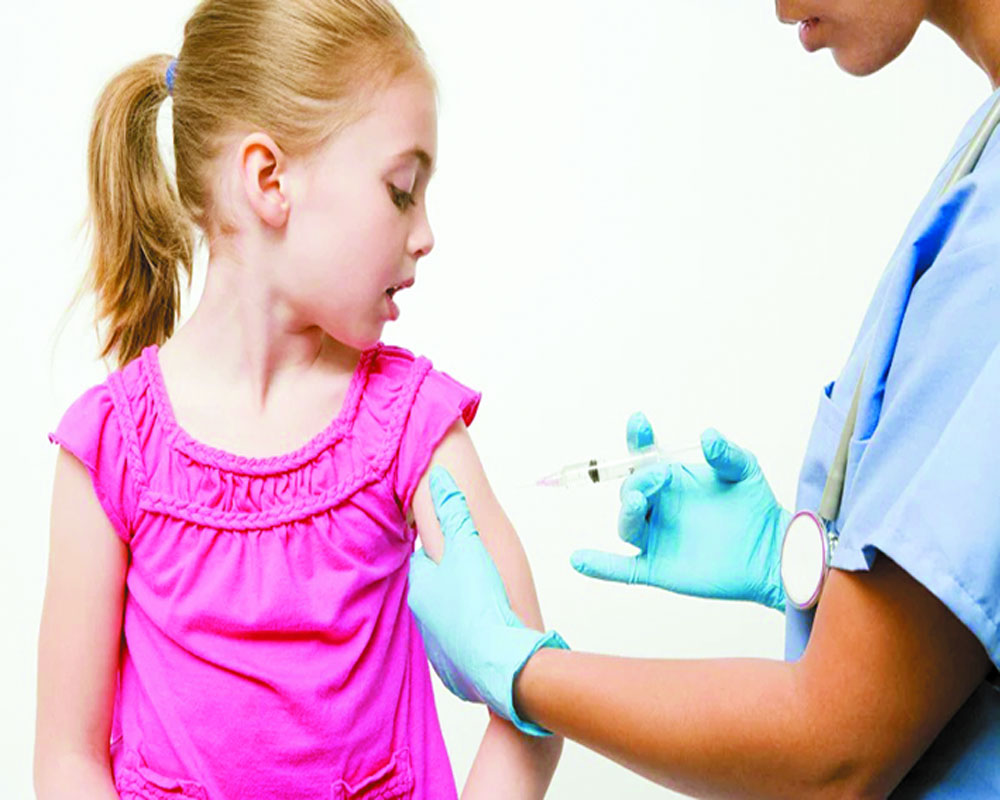The Modi Government has made impressive strides in strengthening immunisation through Mission Indradhanush. What we now need is a focus on building infrastructure, equitable delivery in all regions of the country, and leverage support from grassroots institutions, such as gram sabhas and panchayats, writes Dr Madhu Gupta
As a doctor and a public health specialist, I am often asked, “What is the best way to protect the health of our children?” My answer as usual is: Ensuring safe water and sanitation, a nutritious diet, and immunisation against vaccine-preventable diseases.” Immunisation, in particular, is a very powerful tool when it comes to reducing childhood deaths and illnesses. With just a few shots, a child can be protected against a disease for years, even the rest of their life. What can be more miraculous?
Immunisation becomes especially important in a developing economy like ours. In any given year, nearly a million Indian children under the age of five lose their lives — many due to diseases that could have been prevented, such as pneumonia and diarrhoea. Pneumonia continues to kill over 1.5 lakh children every year in India, and is especially severe among communities facing socio-economic inequalities, with limited access to health services. Fatalities are also higher among the poorest and most disadvantaged children.
Another danger that immunisation can protect against is anti-microbial resistance, which renders certain antibiotics ineffective, making treating children suffering from pneumonia more challenging. Hence, in such situations vaccinating children against common pneumonia-causing organisms becomes all the more pertinent.
Besides the physical suffering and fatalities that pneumonia causes, the disease also has other terrible consequences for children who get sick, and for their families. Children who have had pneumonia in the past are more susceptible to future diseases because their immune systems have been weakened. Additionally, lower-income families are often pushed further into poverty because of the high costs of treating this disease.
Fortunately, we have the tools to prevent some of the leading causes of pneumonia deaths. Along with breastfeeding and adequate nutrition, immunisation plays a key role in protecting children from pneumonia. Vaccines against pertussis, measles, Haemophilus influenzae type B (Hib), and pneumococcus can all help prevent pneumonia among our children. In fact, a recent study concluded that the pneumococcal conjugate vaccine (PCV), which protects against one of the most common causes of pneumonia deaths, could prevent tens of thousands of under-five deaths and save families tens of millions of rupees in treatment costs each year.
Noting the overwhelming benefits of immunisation, the Modi Government in 2017, introduced PCV as a part of the Universal Immunisation Programme (UIP). It is currently available to children free of cost in Bihar, Himachal Pradesh, Madhya Pradesh, Haryana, parts of Rajasthan and Uttar Pradesh. However, despite this tremendous step, challenges remain. PCV is expensive in the private market, and until it is scaled up nationally through the UIP, it remains out of reach for most families in India.
The Indian Government has made impressive strides in strengthening immunisation through Mission Indradhanush. What we now need is a focus on strengthening immunisation infrastructure and equitable delivery in all regions of the country. We also need to increase awareness about how to protect against, prevent, and treat pneumonia by providing compelling, accurate information and leveraging support from grassroots institutions, such as gram sabhas and panchayats.
It is difficult to imagine a more pressing challenge than preventing thousands of child deaths each year. The Government has taken the first step. There is now an overwhelming case for paediatricians, public health experts, political leaders and civil society to come together and forge a plan of action to save lives. Our vision for Ayushman Bharat starts with healthy children. The time for action is now - this is what our children truly deserve.
(The writer is a medical professional and Professor at Community Medicine School of Public Health, Postgraduate Institute of Medical Education and Research, Chandigarh)


























